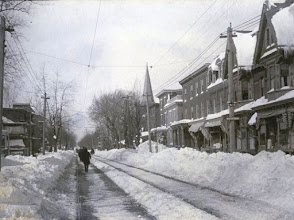- QBO...having begun its negative phase in August...stands at -2.30 in September. QBO will remain negative and intensify throughout the upcoming winter.
- ENSO consensus forecast (see Table 1) for D-J-F from the latest numerical and statistical model runs expects a neutral ENSO to 'weak' la Nina.
Forecast SST Anomalies (deg C) in the Niño 3.4 Region
---
Easterly QBO during la Nina favors 1) a cold central US and 2) negative NAO and hi-latitude blocking.
-
D'Aleo
Note the negative correlation between the QBO state and geo-potential heights over the Pole and the SE CONUS where a negative / east (positive / west) QBO means heights are positive (negative). The former implies hi-latitude blocking and the latter suggests la Nina-like ridging.
The polar vortex is weaker and more easily disturbed during easterly QBO and low solar activity. The current solar cycle is comparatively weak.
"...QBO determines the character of the early winter, leading to a colder and more stable polar vortex in December and January during the west phase of the QBO and a more disturbed and warmer Arctic during the east phase of the QBO."
-
SPARC
"Major winter stratospheric warmings preferentially occur during the easterly phase of the QBO..."
- Holton and Tan (1980)
Major warmings can produce deep-layer anti-cyclonic circulations that descend into the troposphere resulting in blocking flow regimes over hi-latitudes. Blocking is implicated when moderate to strongly negative NAO and AO indexes are observed.
"Pronounced weakenings of the NH wintertime stratospheric polar vortex tend to be followed by episodes of anomalously low surface air temperatures and increased frequency of occurrence of extreme cold events..."
Thompson, et. al. (.pdf)
---

QBO analog year of 'least regret' is 93/94, the bride's maid is 76/77...then it's 83/84...88/89....and finally 64/65. Some winters can be eliminated when the ENSO is considered.
ENSO state for QBO analog winters are...
93/94: neutral (+0.2)
76/77: weakly positive (+0.6)
83/84: neutral (-0.4)
88/89: strongly negative (-1.7)
64/65: weakly negative (-0.8)
Given the currently modeled ENSO forecasts...this winter's best QBO : ENSO analogs appear to favor 83/84...possibly 64/65 if there's strengthening.
More about the analog years and the current state of other analogs NAO/AO/PNA/PDO later...




















